Tree planting was not part of this late c17 / early c18 townscape and tree clusters are proposed as less likely to obscure all the facades, yet provide shade in the summer. Rows of trees are not suitable for this unusual townscape.
For these reasons, tree planting is generally inappropriate in the narrow streets of Seven Dials, where many vaults, service pipes and cables run beneath the footways. Large trees, when in leaf, can reduce light and obscure the area’s historic features. The existing six trees should be kept well-managed to avoid obscuring the Sundial Pillar and the three lights illuminating the dial faces.
However, trees are now a popular feature in our cities, creating greenery and mitigating carbon emissions. The Seven Dials Trust, with Camden and the Covent Garden Community Association, developed a policy for the area based on tree clusters where there is room, rather than boulevards of street trees. The exception was in Endell Street (planted in 1984) where the street is wide and for which Camden’s officers proposed a very successful mix of varieties.
Elsewhere in the area, tree clusters have proved popular and should continue as the norm, always preserving the unique vista to the Sundial Pillar from the each of the seven entry points.
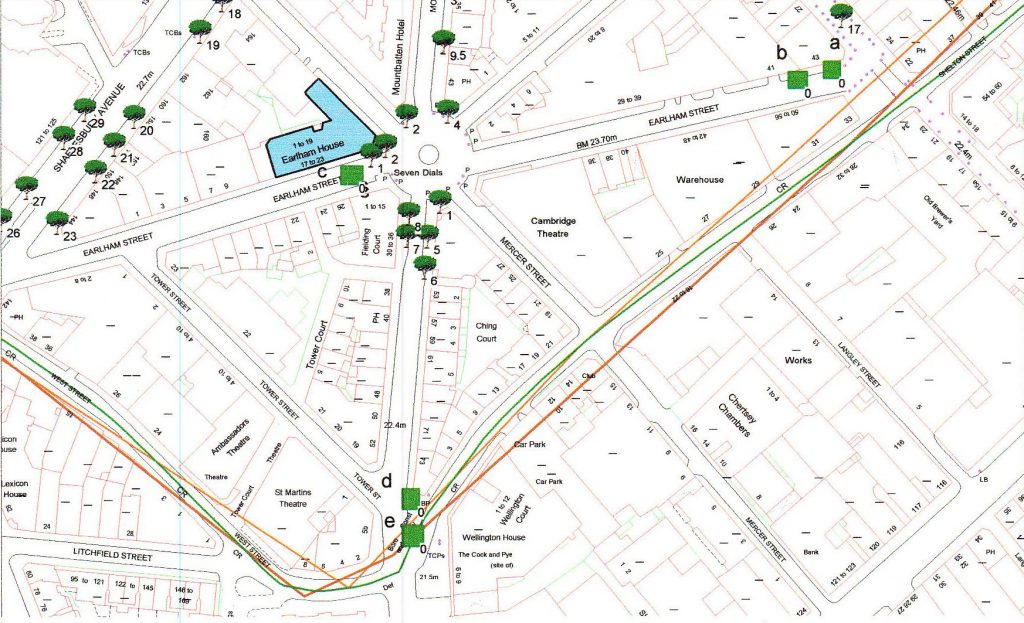
An overall plan for tree clusters was drawn up following walkabouts throughout the whole Seven Dials Conservation Area. Electromagnetic surveys of services showed the few places where tree clusters are possible.
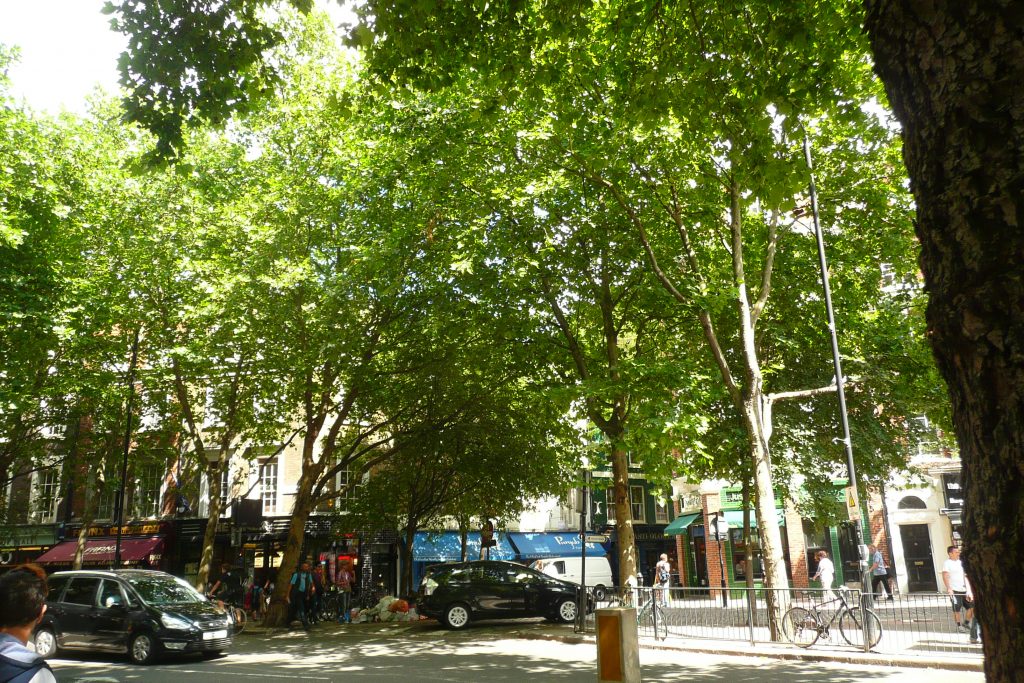
In 1842 ‘Knight’s London’ described Seven Dials as ‘the hanging gardens of Babylon’ because of the great proliferation of planting on the wide shopfront flashings (the ledges above the shopfront fascia boards and cornices). Many of these historic shopfronts still exist and this tradition should be encouraged and built upon. The Seven Dials Trust chose to celebrate the year 2000 with its Millennium Greening Project which demonstrated the effectiveness of this approach.
Tubs, pots and planters on the footway are not recommended unless there is room, but can be effective within courts if not on a pedestrian desire line. Narrow, low planters that allow ‘elbow room’ are encouraged to add greening to the parts of the footway adjacent to facades where feet rarely tread.
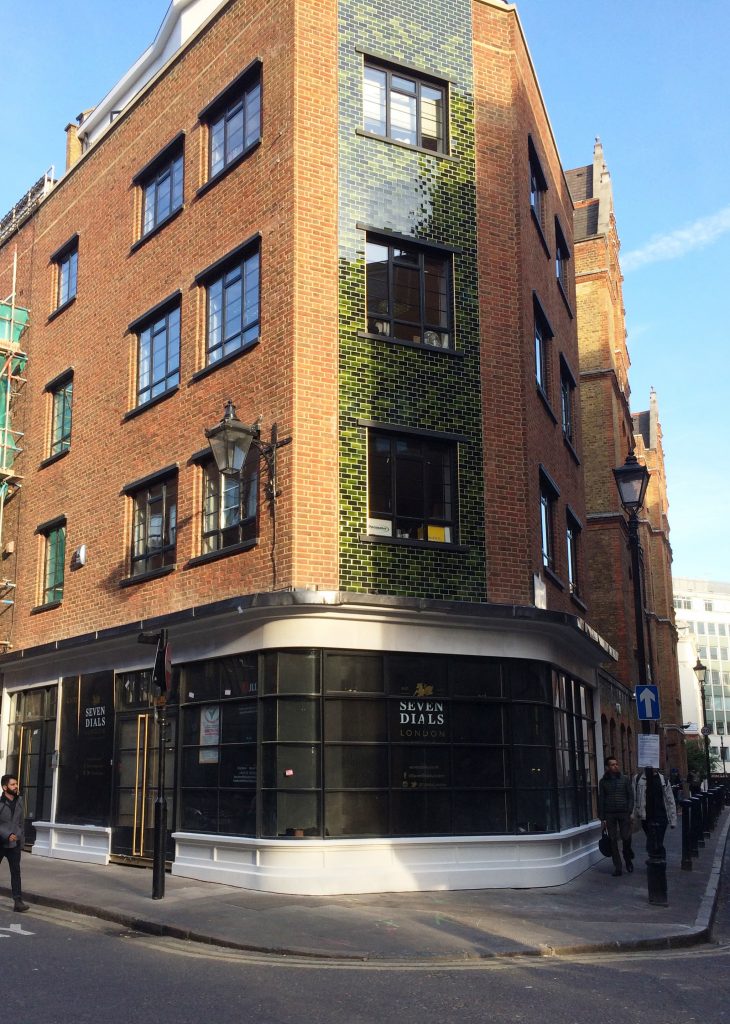
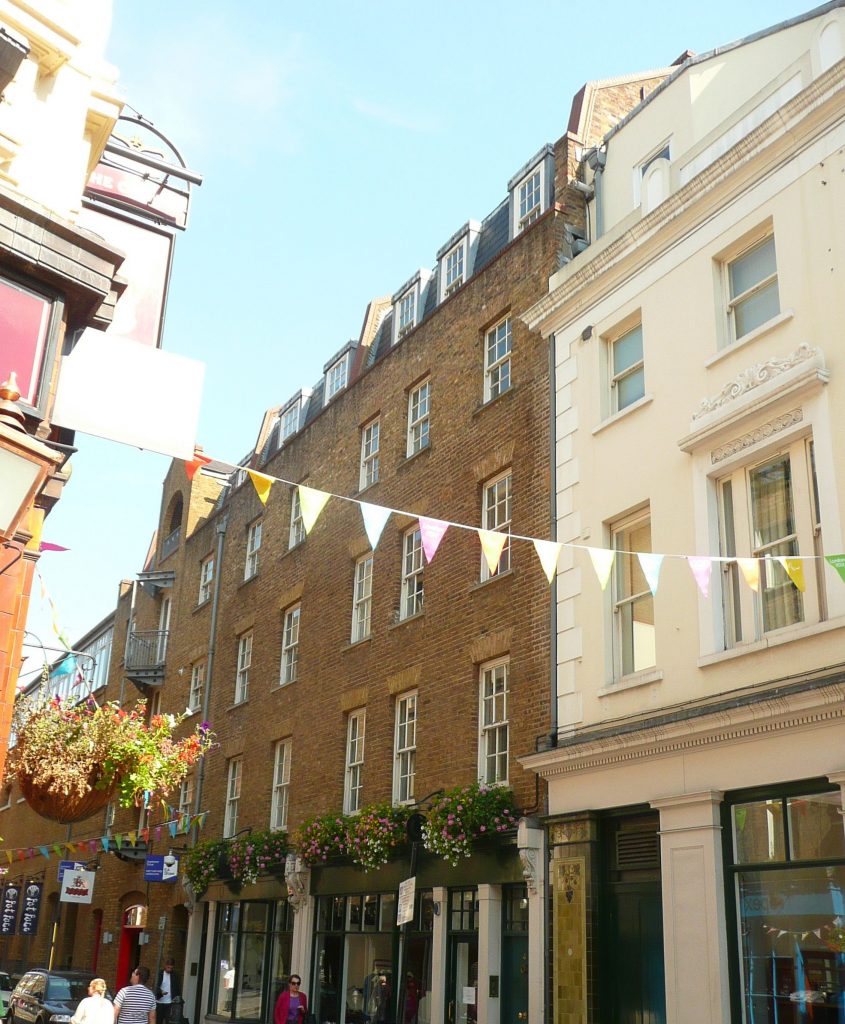
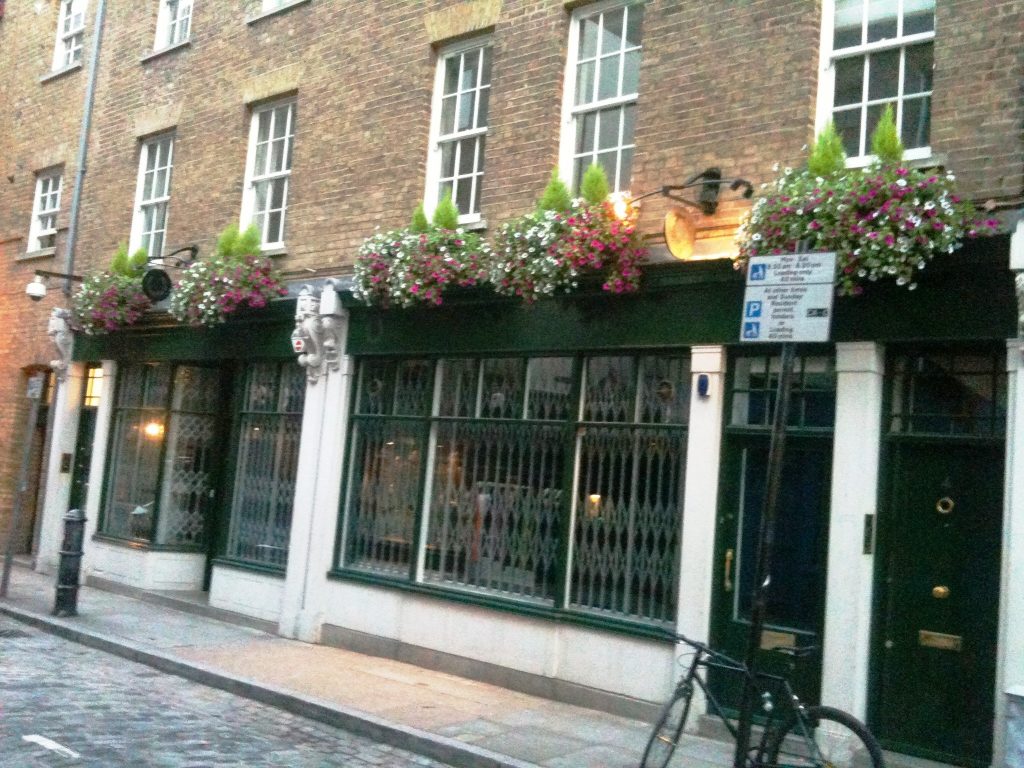
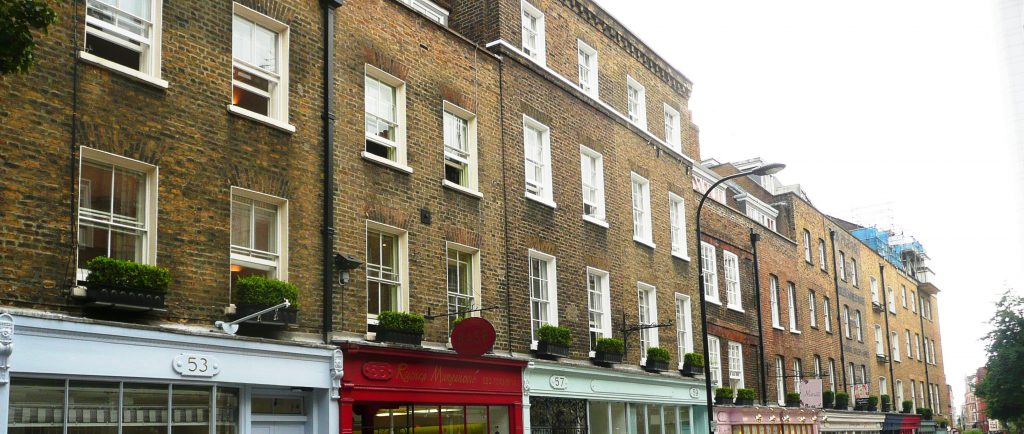
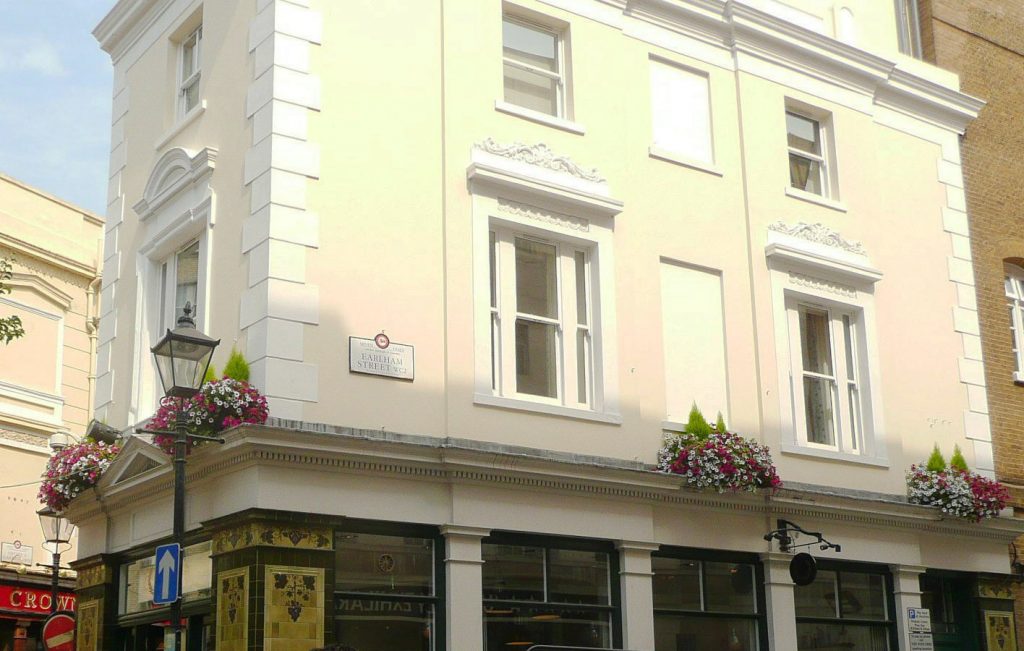
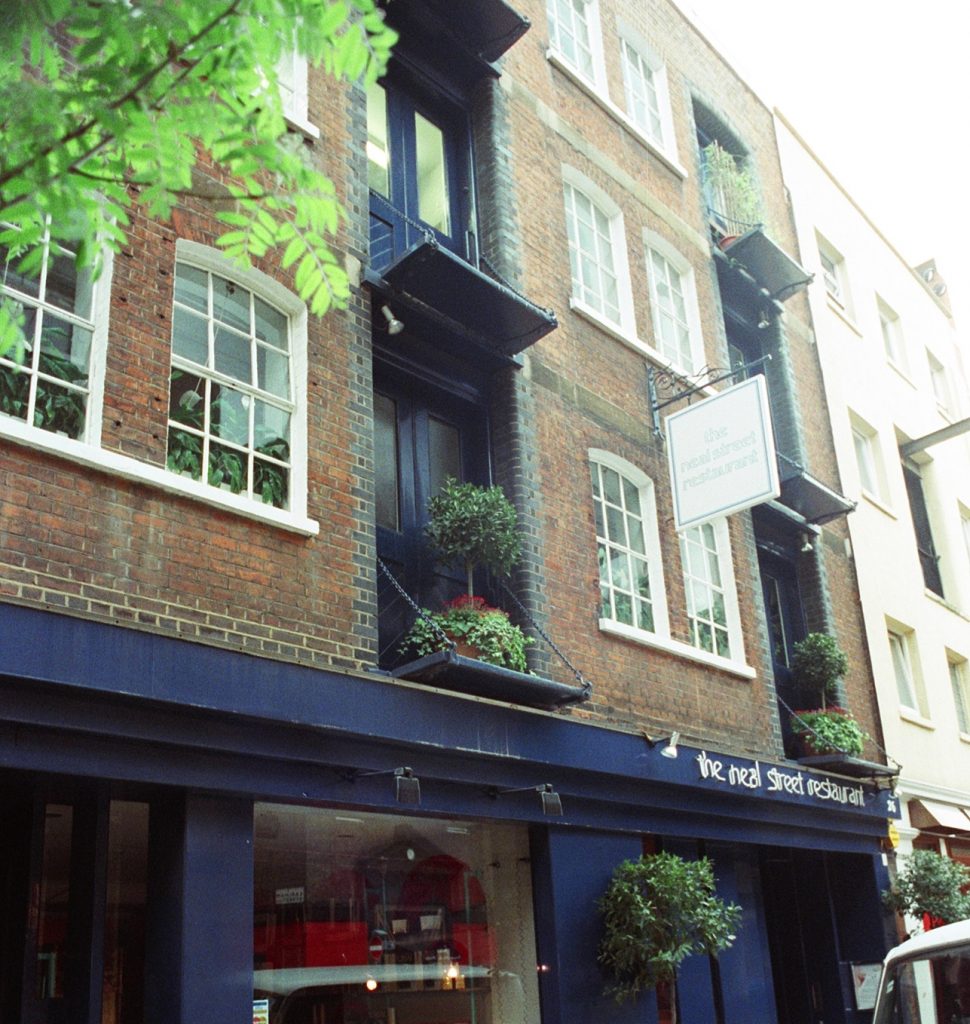
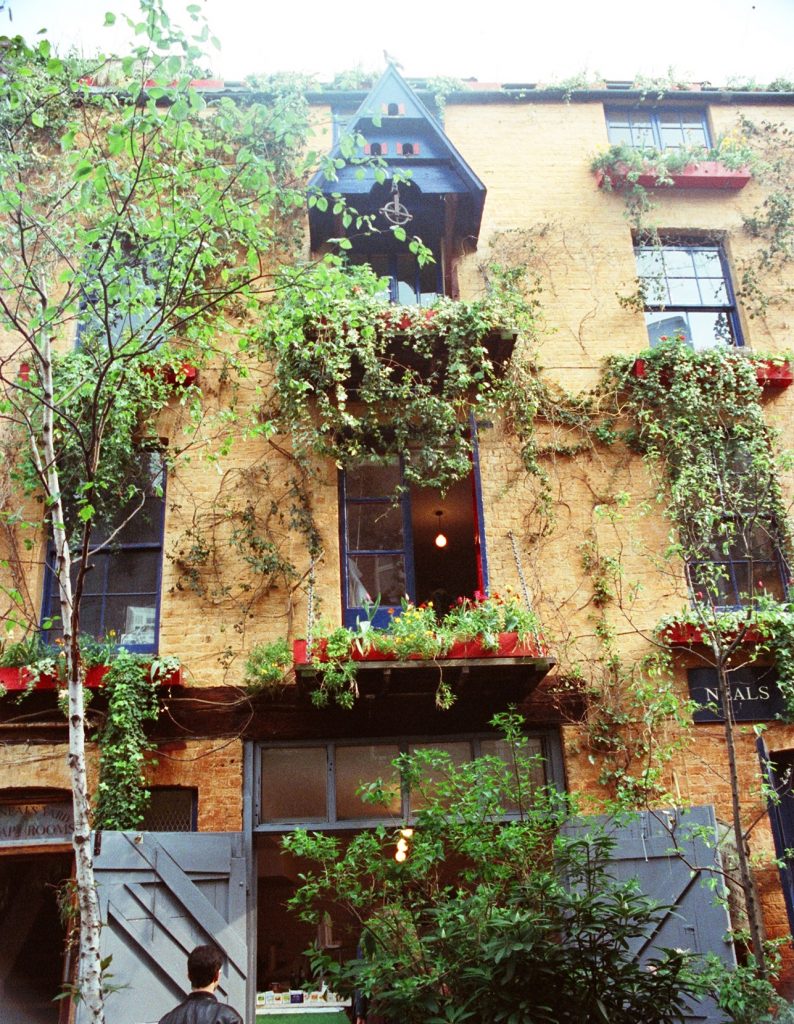
Use of the wide shopfront entablatures has been the traditional form of planting in the area since the mid-19th century. On some of the 19th century warehouses, use is made of the delivery flaps to support container planting.
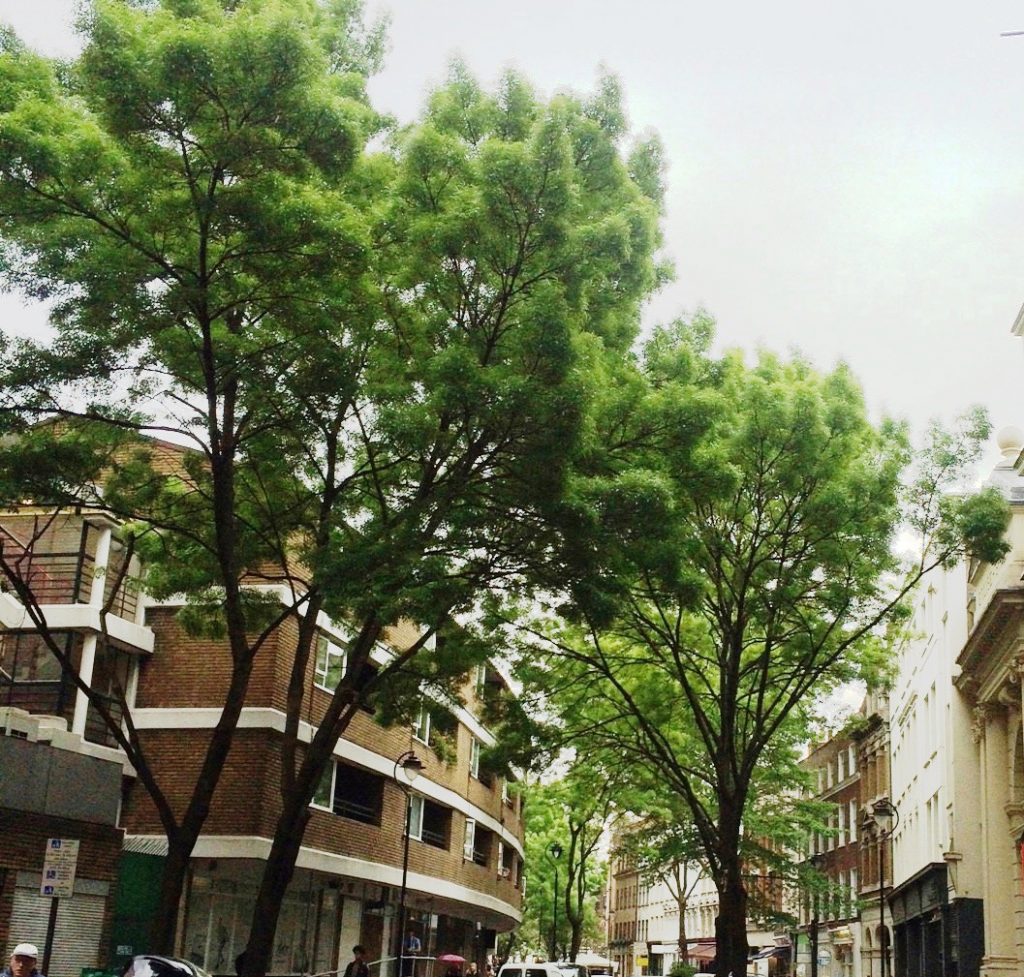
Shaftesbury Capital plc, the area’s largest freeholder, has commendably continued this tradition. They are partners in the Wild West End project which seeks to enhance biodiversity in the West End of London. Window boxes have been planted with insect-friendly plants and this approach should be extended to rooftop planting where feasible.